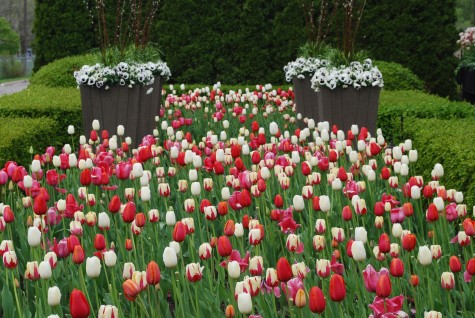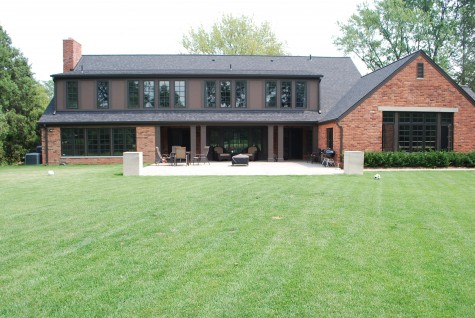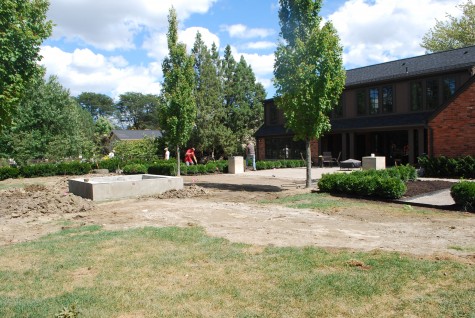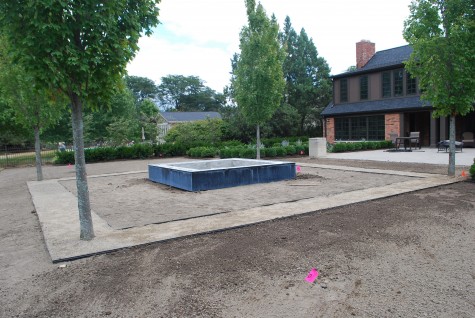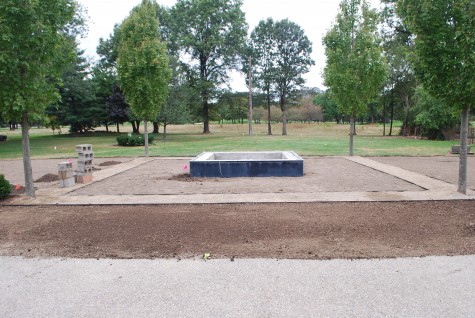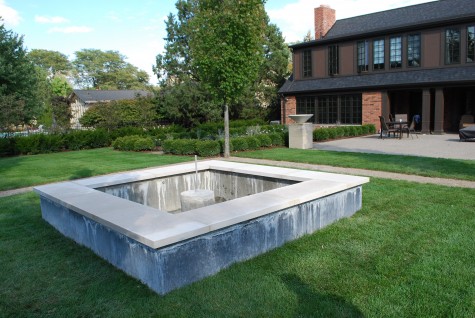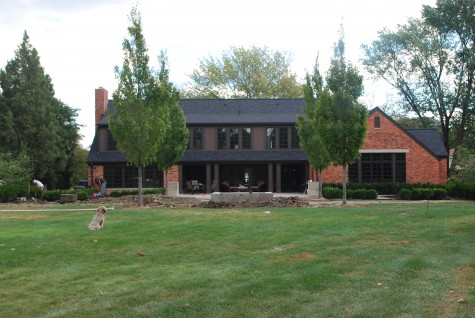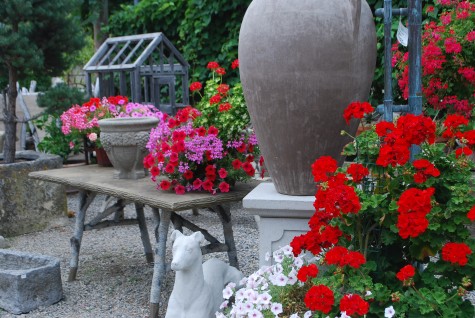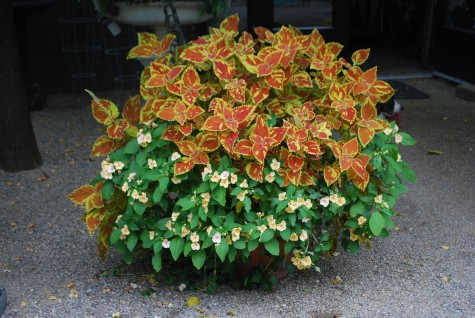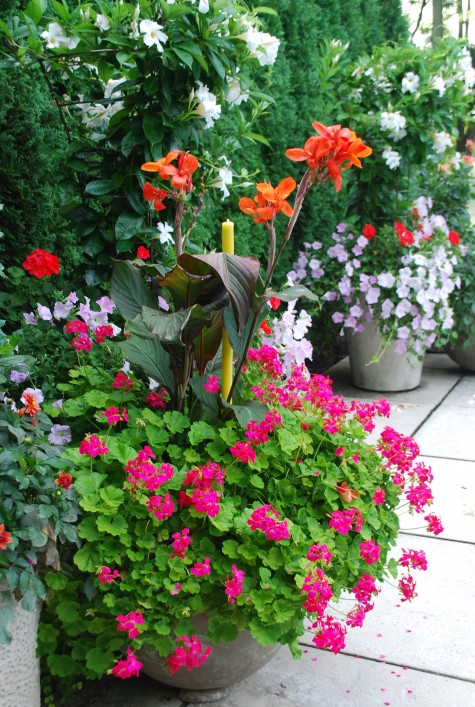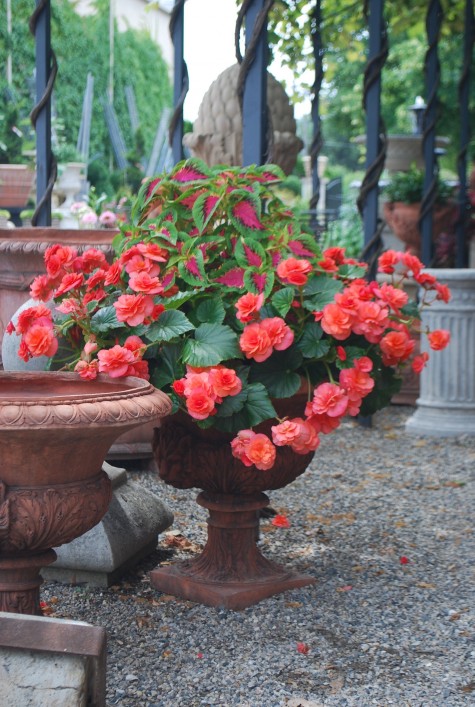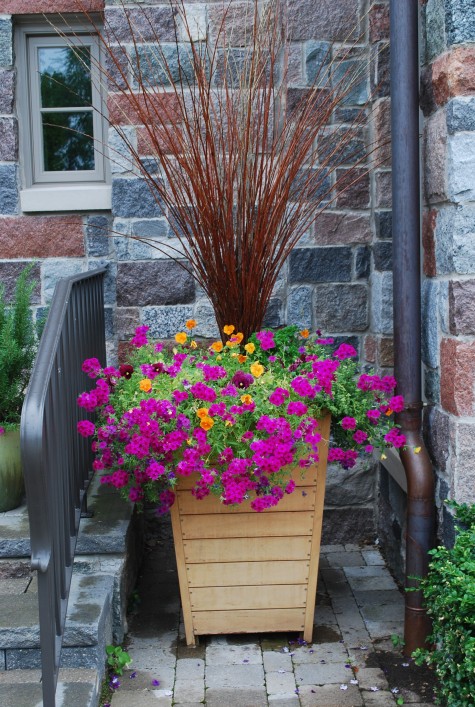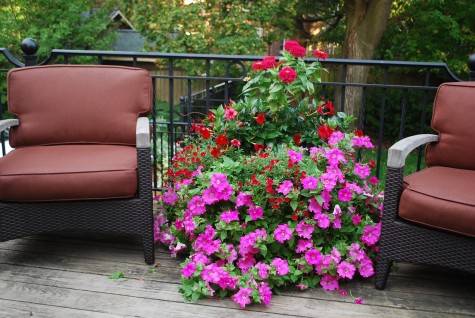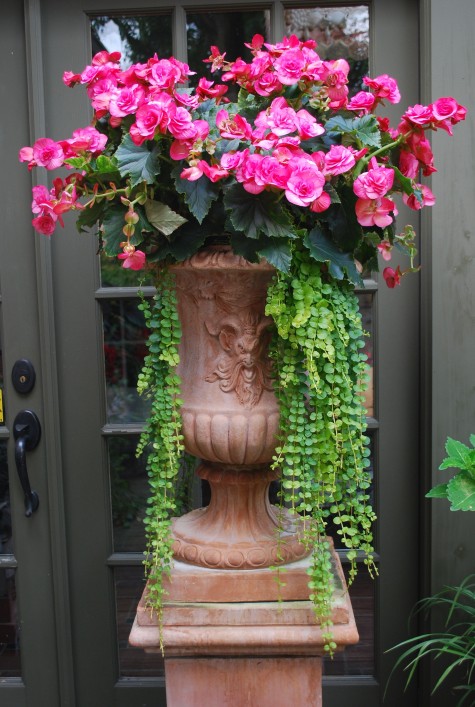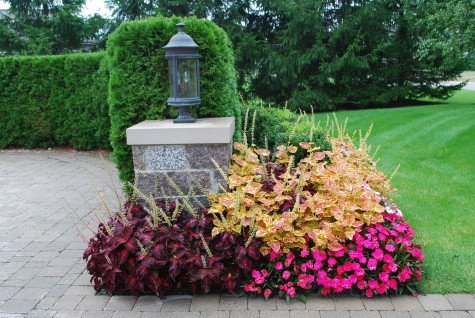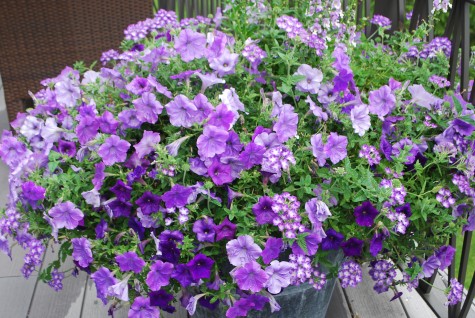 There is only one thing in this world that is easier than planting spring flowering bulbs-that would be not planting spring flowering bulbs. I have never really been able to determine why. I know it is hard to believe those brown orbs will ever amount to anything. Granted planting in cold and blustery weather is not my favorite. It is true that all you have to show immediately for your work is what appears to be disturbed ground. But from the first eranthis in March to the June blooming Globemaster alliums, any spring is all the more gorgeous for the bulbs. The muscari mix in these two troughs-a Christmas present to Rob. When I saw them in bloom, I could have kicked myself for not planting a single bulb at home. I had the better part of three months to regret my omission. I was determined not to make that mistake this fall.
There is only one thing in this world that is easier than planting spring flowering bulbs-that would be not planting spring flowering bulbs. I have never really been able to determine why. I know it is hard to believe those brown orbs will ever amount to anything. Granted planting in cold and blustery weather is not my favorite. It is true that all you have to show immediately for your work is what appears to be disturbed ground. But from the first eranthis in March to the June blooming Globemaster alliums, any spring is all the more gorgeous for the bulbs. The muscari mix in these two troughs-a Christmas present to Rob. When I saw them in bloom, I could have kicked myself for not planting a single bulb at home. I had the better part of three months to regret my omission. I was determined not to make that mistake this fall.
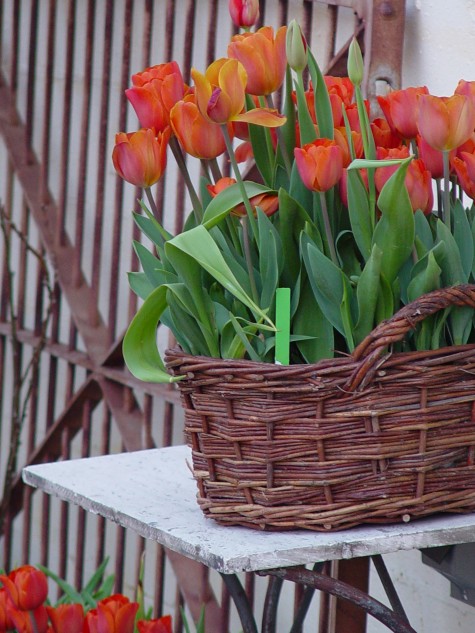 As I hate having no recourse given what I forgot to do the previous fall, I plant pots with spring bulbs for the shop. There is no end of information about forcing bulbs, but forcing refers to tricking the bulb into growing and blooming before its natural bloom date. I like flowers in season; I do not want Lily of the Valley in December. I just like the option of moving a pot of bulbs around to the front porch, if that suits me. So I pot up bulbs, and winter them in our unheated garage. I am careful to get them right outdoors whenever things seem to be stirring.
As I hate having no recourse given what I forgot to do the previous fall, I plant pots with spring bulbs for the shop. There is no end of information about forcing bulbs, but forcing refers to tricking the bulb into growing and blooming before its natural bloom date. I like flowers in season; I do not want Lily of the Valley in December. I just like the option of moving a pot of bulbs around to the front porch, if that suits me. So I pot up bulbs, and winter them in our unheated garage. I am careful to get them right outdoors whenever things seem to be stirring.
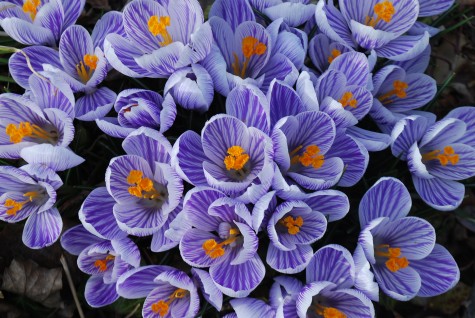 Crocus can be up out and done in a blink of an eye, but that is no reason not to have them. I have had my litlle patches come up and bloom faithfully for 15 years. That counts for a lot right there. I like getting down on the ground, so I can see the flowers. Having the soil so close, I can smell the spring coming out of the ground. It is a fragrance that defies description, but if you are a gardener you can probably conjure up that smell out of thin air. Crocus bulbs are little; you can practically push them down 3 inches with your thumb.
Crocus can be up out and done in a blink of an eye, but that is no reason not to have them. I have had my litlle patches come up and bloom faithfully for 15 years. That counts for a lot right there. I like getting down on the ground, so I can see the flowers. Having the soil so close, I can smell the spring coming out of the ground. It is a fragrance that defies description, but if you are a gardener you can probably conjure up that smell out of thin air. Crocus bulbs are little; you can practically push them down 3 inches with your thumb.
 Planting spring bulbs in little pots means I am able to use them in bigger spring combination pots. Grape hyacinths are a great choice for this, as they last so long. In a perfect spring, all the flowers on the bulbs go into the fridge each night. The only enemy of the spring bulbs is early and relentless heat. I prefer to be optimistic; I have 5 varieties and mixes of muscari on order. What you see above is John Sheepers Muscari Magical Mixture; it is well named.
Planting spring bulbs in little pots means I am able to use them in bigger spring combination pots. Grape hyacinths are a great choice for this, as they last so long. In a perfect spring, all the flowers on the bulbs go into the fridge each night. The only enemy of the spring bulbs is early and relentless heat. I prefer to be optimistic; I have 5 varieties and mixes of muscari on order. What you see above is John Sheepers Muscari Magical Mixture; it is well named.
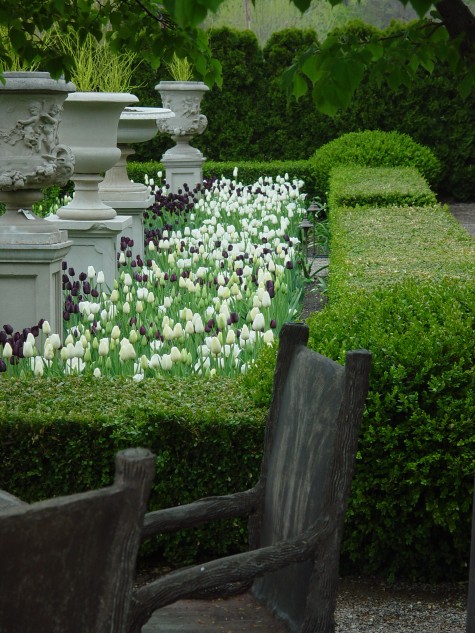 The species and various hybrid tulips make it possible to have tulips in bloom for at least 2 months. 10 tulips all planted in a bunch makes a great in ground bouquet. It takes 2500 tulips to fill the beds in front of the shop. We use a planting technique that works well for planting large numbers. We lay out four or five rows. Each spot for a bulb gets stabbed with the trowel held backwards. We open that slot slightly, drop the bulb in the slot, and firm the soil. We do not dig holes six inches deep, and place the bulb in the bottom, nose side up. This takes way too much time to no better end. Daffodils like to be really deep. I have a team of two handle the planting; one person pushes a shovel- blade flipped backwards and held exactly perpendicular to the ground- all the way into the dirt. When he pushes the shovel handle away and pulls up, a slot is created. Person 2 places the bulb in the slot; person 1 tamps the ground. This is much quicker than digging a hole.
The species and various hybrid tulips make it possible to have tulips in bloom for at least 2 months. 10 tulips all planted in a bunch makes a great in ground bouquet. It takes 2500 tulips to fill the beds in front of the shop. We use a planting technique that works well for planting large numbers. We lay out four or five rows. Each spot for a bulb gets stabbed with the trowel held backwards. We open that slot slightly, drop the bulb in the slot, and firm the soil. We do not dig holes six inches deep, and place the bulb in the bottom, nose side up. This takes way too much time to no better end. Daffodils like to be really deep. I have a team of two handle the planting; one person pushes a shovel- blade flipped backwards and held exactly perpendicular to the ground- all the way into the dirt. When he pushes the shovel handle away and pulls up, a slot is created. Person 2 places the bulb in the slot; person 1 tamps the ground. This is much quicker than digging a hole.
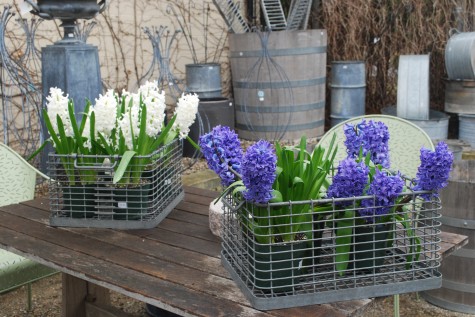 The most arresting and spectacular bulb display I have ever seen was in Chicago on a University campus this past spring. Some brilliantly obsessed bulb afficianado had planted many hundreds of dark purple, dark red violet, and lavender hyacinths in a mix-shoulder to shoulder. It was breathtaking, and romantic-all those flowers so close together. It was a display I feel compelled to recreate for myself. Hyacinths are beautiful at every stage of their development. This makes them a good choice for a container bulb planting.
The most arresting and spectacular bulb display I have ever seen was in Chicago on a University campus this past spring. Some brilliantly obsessed bulb afficianado had planted many hundreds of dark purple, dark red violet, and lavender hyacinths in a mix-shoulder to shoulder. It was breathtaking, and romantic-all those flowers so close together. It was a display I feel compelled to recreate for myself. Hyacinths are beautiful at every stage of their development. This makes them a good choice for a container bulb planting.
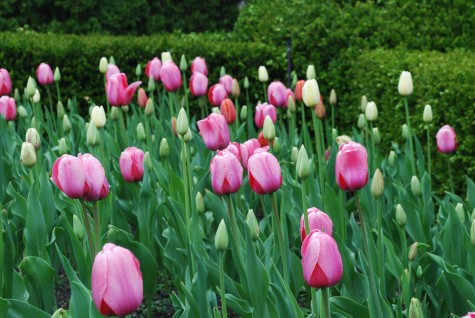 I usually plant 3 or 4 tulips in a mix in the shop garden. I like to vary the heights of the flowers, and the bloom time. I like the informality of the mix. The garden has more than enough formality going for it in the boxwood. I like the flowers up and down, rather than aitting on top. This Darwin tulip, Pink Impression, was the first to bloom. It lasts unusually long for a Darwin. The garden is beautiful at this stage too; the color and texture of the leaves and buds is a lot to look at.
I usually plant 3 or 4 tulips in a mix in the shop garden. I like to vary the heights of the flowers, and the bloom time. I like the informality of the mix. The garden has more than enough formality going for it in the boxwood. I like the flowers up and down, rather than aitting on top. This Darwin tulip, Pink Impression, was the first to bloom. It lasts unusually long for a Darwin. The garden is beautiful at this stage too; the color and texture of the leaves and buds is a lot to look at.
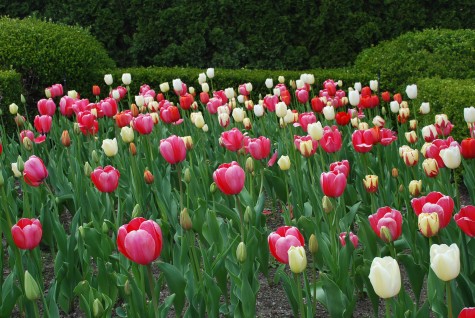 The red Darwin Oxford, and the single late white tulip Maureen are both on the way. Barely getting started are the white flamed red and cerise single lates-World Expression. It might be my favorite tulip. There would be a moment when I would have tulips as far as the eye could see. Well, pretty far, for sure. Before your fall gets away from you, you might want to put some of those brown knobs in the ground. You will be happy you did, come spring.
The red Darwin Oxford, and the single late white tulip Maureen are both on the way. Barely getting started are the white flamed red and cerise single lates-World Expression. It might be my favorite tulip. There would be a moment when I would have tulips as far as the eye could see. Well, pretty far, for sure. Before your fall gets away from you, you might want to put some of those brown knobs in the ground. You will be happy you did, come spring.
